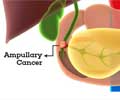New research says treating advanced small-cell lung cancer with thoracic radiation therapy in addition to standard treatment prolongs long-term survival and reduces cancer recurrence. by almost 50%.

SCLC is an aggressive cancer that accounts for about 13% of all lung cancers. The majority of patients present with extensive disease that has spread to other areas of the body.
"In recent years, we have made some progress in improving survival by giving prophylactic cranial radiotherapy (radiation to the head to reduce the risk of the cancer spreading to the brain) after chemotherapy, and this is now considered the standard of care. However, survival for patients with extensive disease remains poor (2-year survival of less than 5%) and the likelihood of the cancer recurring and spreading to other parts of the body remains high", explains Ben Slotman, lead author and Professor of Radiation Oncology at the VU University Medical Center in Amsterdam, Netherlands.
"Although most SCLC patients have persistent tumours within the chest after chemotherapy, at present local thoracic radiotherapy is not generally given because of the spread of disease outside the thorax, and is reserved for palliation of symptoms."*
In this phase 3 study, Slotman and colleagues randomly assigned 498 adults responding to first-line chemotherapy, from 42 centres across four countries (Netherlands, the UK, Norway, and Belgium), to either standard follow-up with prophylactic cranial radiotherapy alone or prophylactic cranial radiotherapy plus thoracic radiotherapy given over 2 weeks.
Despite overall survival being much the same in both groups during the first year, after 2 years 13% of patients treated with thoracic radiotherapy were alive compared with 3% of those given standard follow-up. Significantly more patients receiving thoracic radiotherapy also survived for 6 months without the disease getting worse (24% vs 7%). Additionally, only 20% of patients treated with thoracic radiotherapy developed cancer recurrence in the thorax compared with 46% of patients who did not receive thoracic radiotherapy. Thoracic radiotherapy was well tolerated with no severe toxic effects reported. The most common grade 3 or higher toxic effects were fatigue and dyspnoea (shortness of breath).
Advertisement
Writing in a linked Comment, Jan P van Meerbeeck from Ghent and Antwerp University in Belgium and David Ball from The University of Melbourne in Australia point out, "Refreshingly, the radiotherapy in Slotman and colleagues' study was not technically complex and it would be easy to provide at low cost in even the most modestly resourced radiotherapy departments."
Advertisement
Source-Eurekalert














